

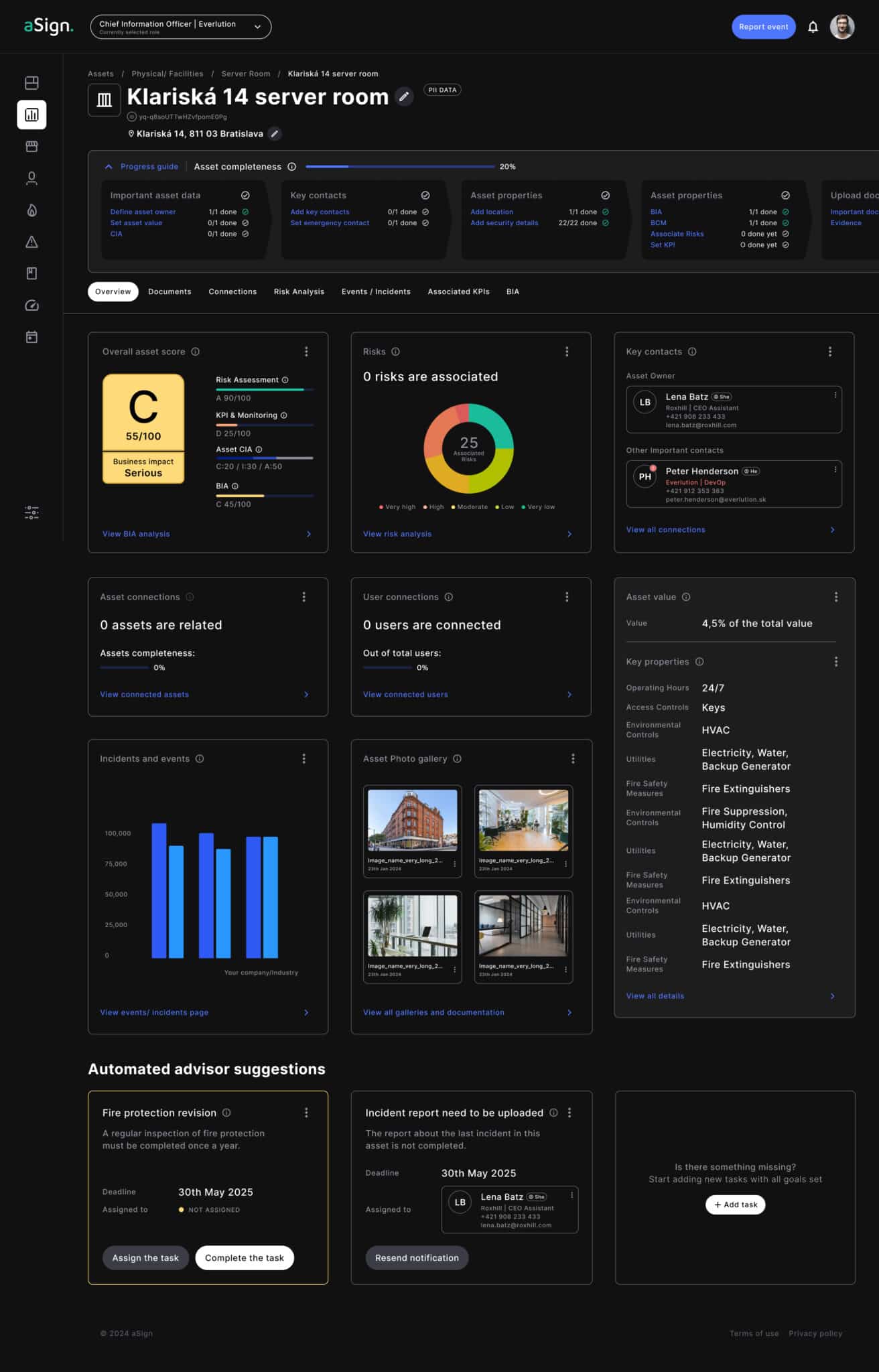
Management of assets, risks, and processes within a company is a systematic approach to resource management, risk identification and mitigation, and process optimization to achieve organizational goals. This integrated approach helps ensure the efficient operation of the company, protection of its assets, and improved performance. With the Qzila platform, you’ll always stay one step ahead.
Advanced asset management and impact monitoring on the company
Advanced recording and management of assets for companies of various sizes, enhanced with advanced definition of interconnections between individual assets and impact monitoring on the company (BIA) from the perspective of various standards.
User management and information sharing within the organization
Management of users and complex structures within the company, ensuring information sharing through automatically generated forms for specific events. Tracking changes within the company.
Document and „patch“ management
Secure storage of uploaded documents with „patch“ management (recording users who performed the backup, where the backup is located, and the patching process for individual systems).
Document generation and version management
Generation of necessary documents (ISMS, BCM, supporting documents, and reports), providing advanced logging and version control for each document, and generating logs for document changes.
Task management and deadline monitoring
Management and delegation of tasks based on the assigned rights and responsibilities of each employee. Monitoring and notifications of upcoming deadlines.
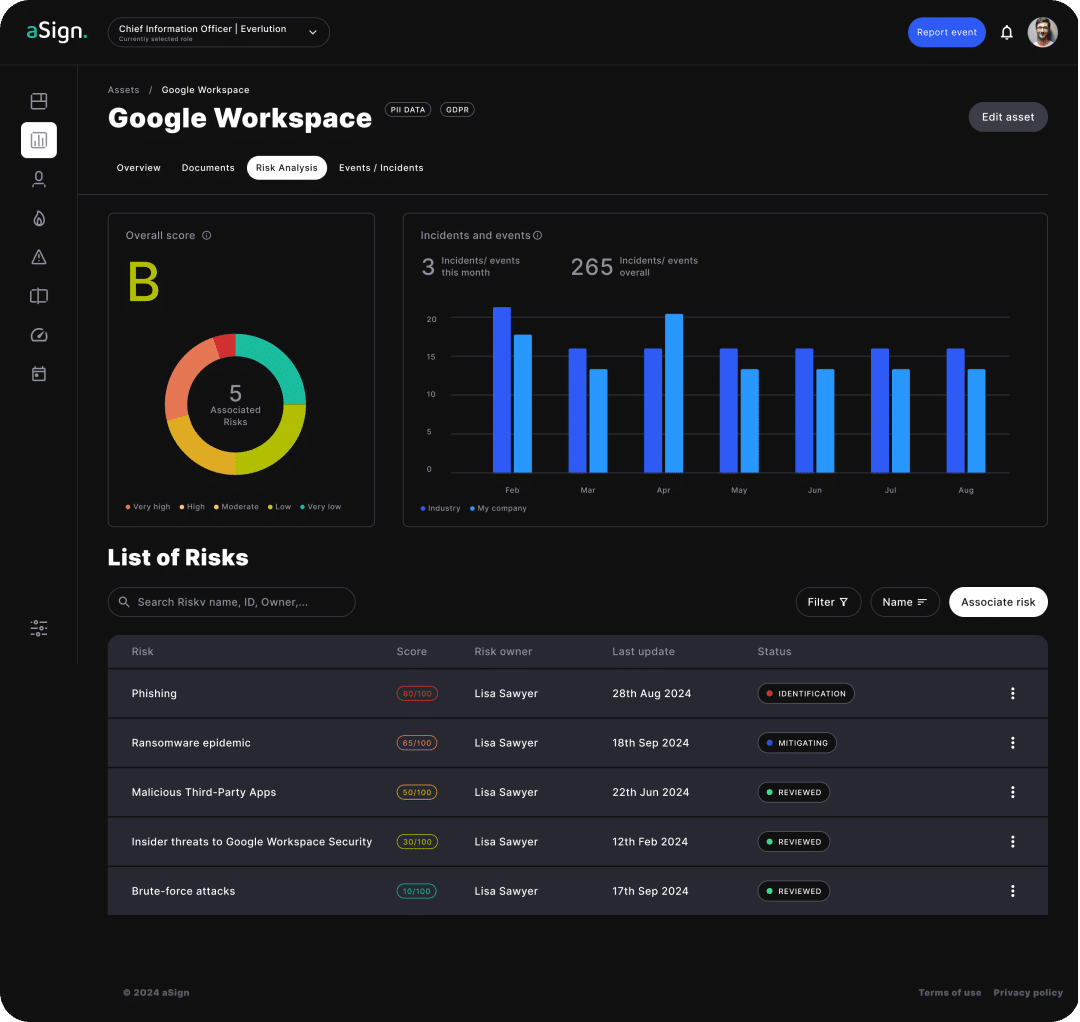
One part of the platform – risk management: focuses on identifying, assessing, and mitigating risks that may impact the achievement of the organization’s objectives.
Comprehensive risk management and incident prevention
Comprehensive company risk management, linked to incidents within the company or in a specific business sector. Mechanisms for risk mitigation, along with the implementation and monitoring of preventive measures.
Recovery action plan and contact management
Setting up an action plan for recovery after various types of incidents, managing key contacts for individual assets, organizational structure, and visualization (information and contact flow).
Confidentiality, Integrity, and Availability (CIA) are the fundamental pillars of information security and form the basic framework for risk management in organizations. These three aspects help identify, analyze, and mitigate risks associated with information assets. CIA analysis is a fundamental tool for addressing the complexity of information security and ensuring effective risk management.
Monitoring and improvement: Continuous analysis and updating of risk scores, automatic display of estimated changes.
Evaluation of scores based on CIA analysis: Objective assessment of the individual pillars of information security.
Acceptance of measures and their retrospective evaluation: Implementation of controls that minimize insufficient or inconsistent application of measures.
Recording every score change: A clear timeline documenting each incident, implemented measure, and its evaluation.
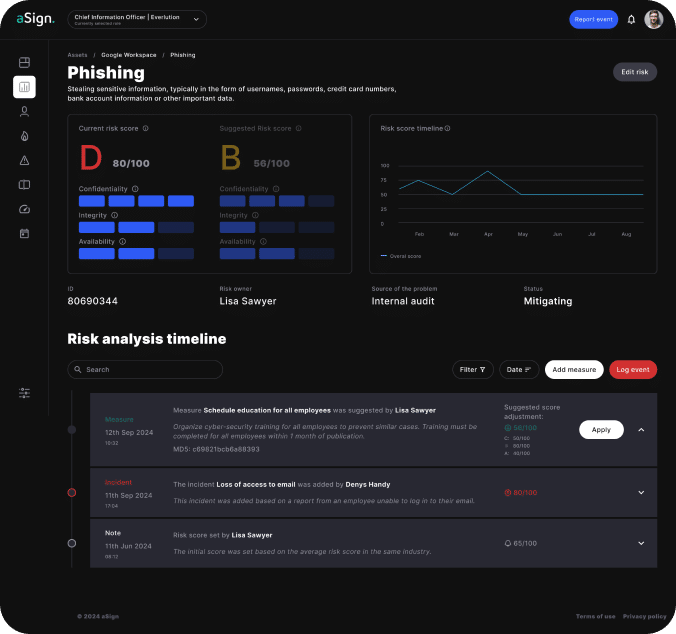
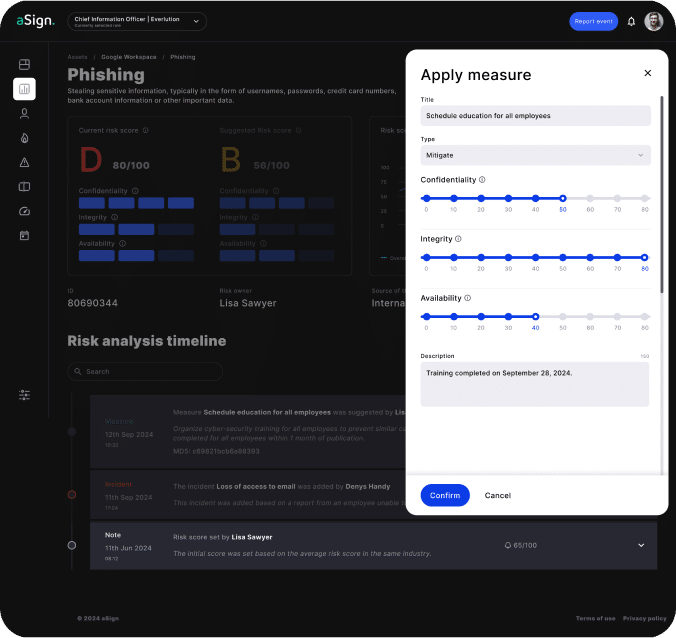
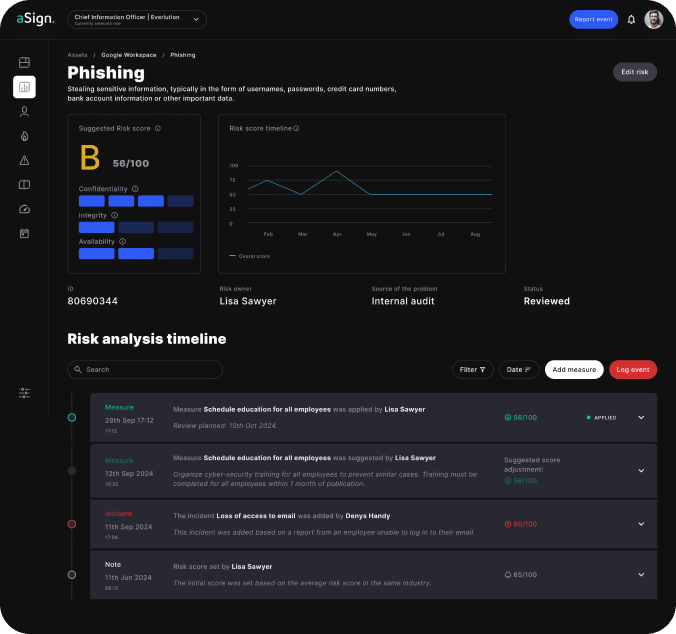
KPI management (Key Performance Indicator management) is the process of defining, measuring, and managing key performance indicators (KPIs) that help an organization monitor and achieve strategic goals. KPIs are quantitative metrics that provide insight into how effectively an organization, team, or individual is achieving set objectives.
Specification of important KPI: Defining KPI in relation to the organization’s strategic goals and their connection to risks.
Monitoring and measurement: Regular data collection and comparison of results with goals.
Setting up multi-level alarms: Identifying deviations, creating notifications for responsible individuals for subsequent analysis of the causes of unmet goals.
Clear data history with the option to manually exclude specific deviations (values) due to the specific conditions under which they were recorded.
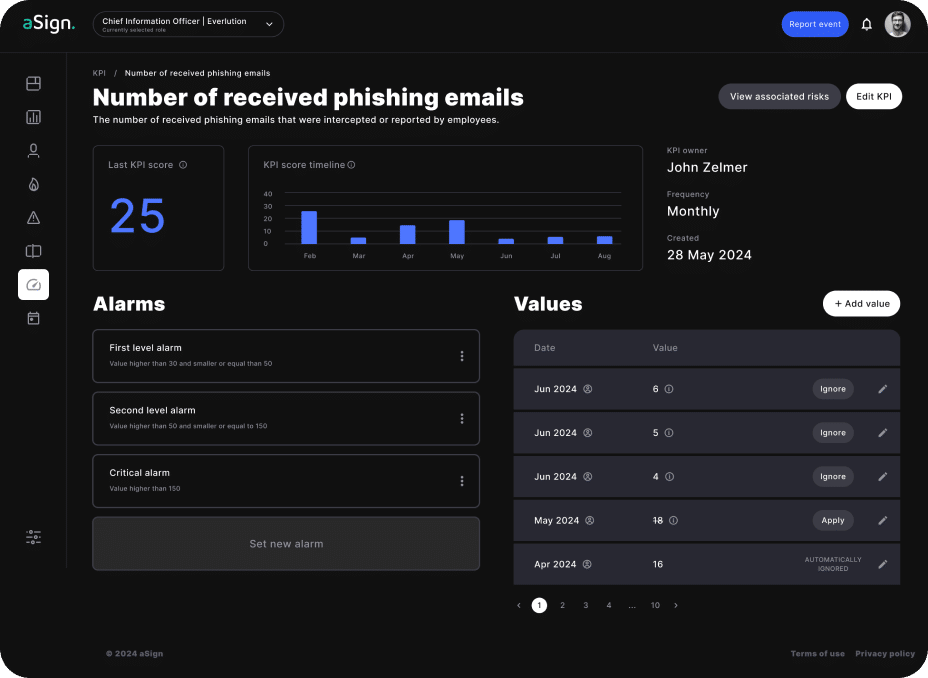
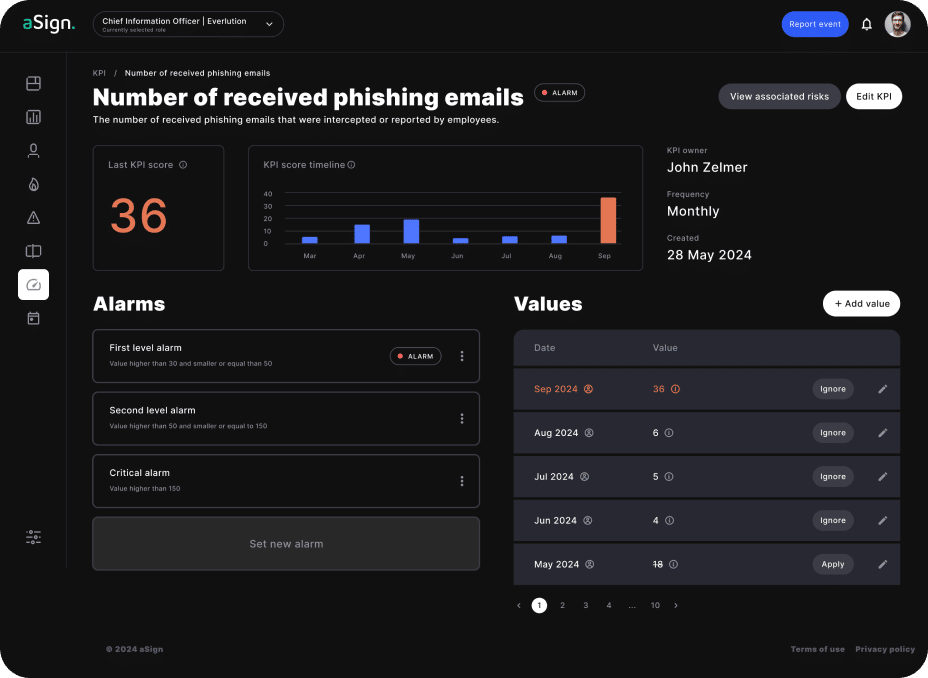
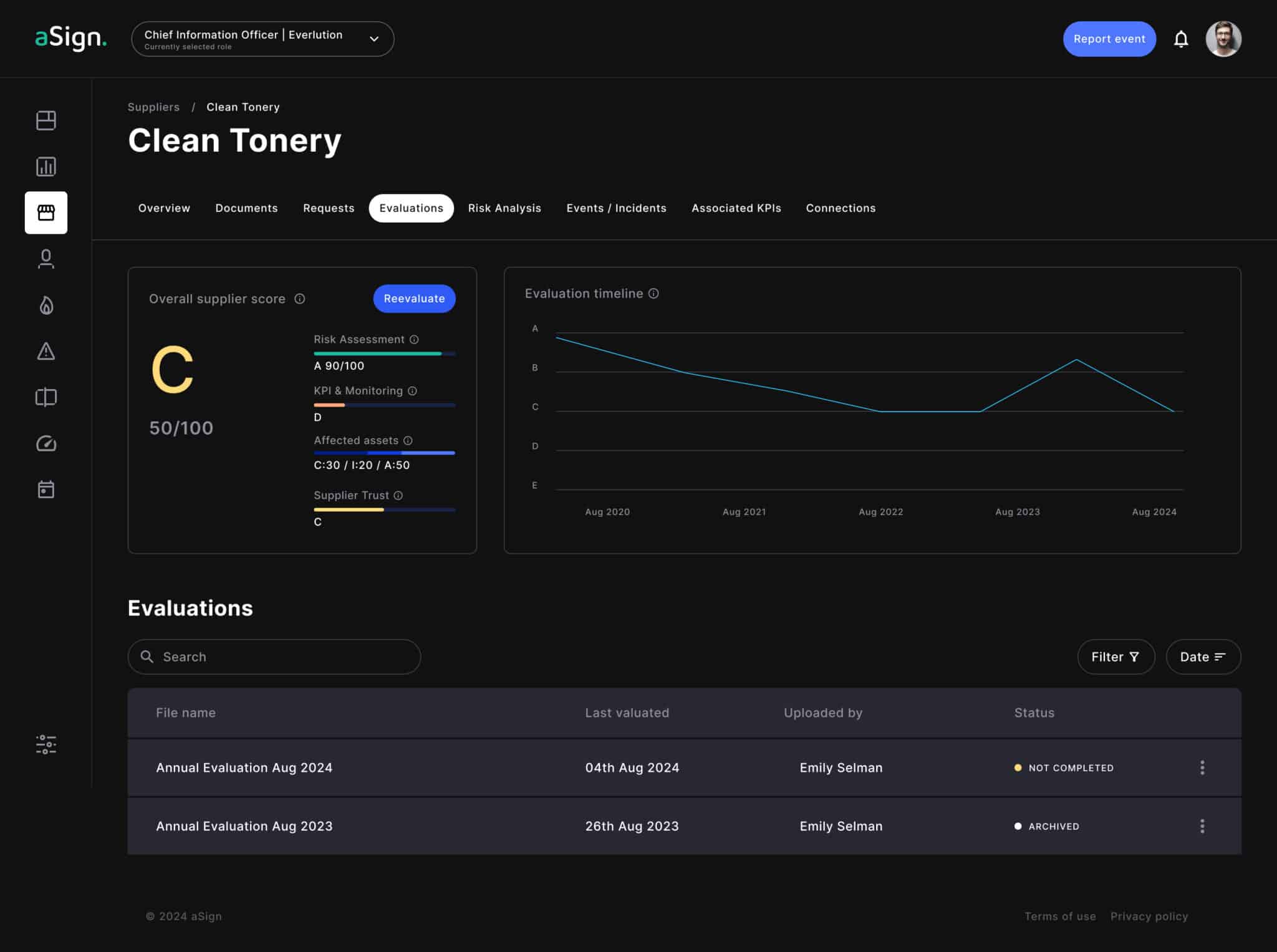
Keep control over the systematic process of evaluating the performance and reliability of suppliers who are critically important to the business. The goal is to ensure that collaboration with suppliers meets the company’s expectations and contributes to its strategic objectives. This process includes analyzing quality, costs, delivery times, flexibility, and other aspects.
Supplier management and compliance assessment
Management and evaluation of suppliers, an automated process for systematically assessing the organization’s compliance with the requirements of a specific standard.
KPI (Key Performance Indicators):
Set key indicators for each criterion (e.g., defect rate, delivery time).
Questionnaires and audits:
Use structured questionnaires and create audit reports for your strategic suppliers.
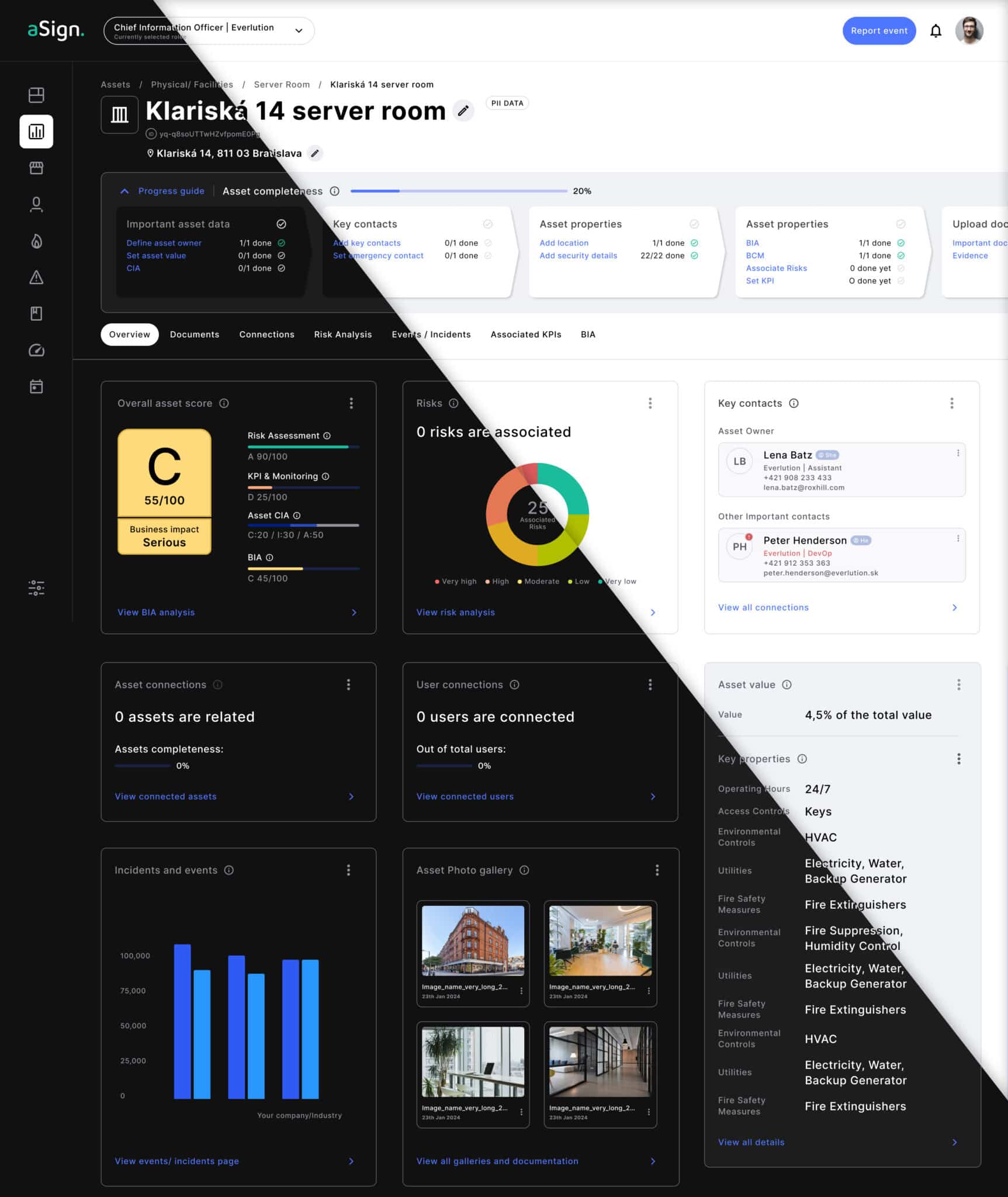
For your maximum comfort when using the platform, you have both dark and light version available.
Clarity and intuitive use
Within the platform, you will find numerous tools that help streamline the use of the entire system.
Data completion indicator
Within the platform, you will find several handy tools to fully utilize its capabilities.
